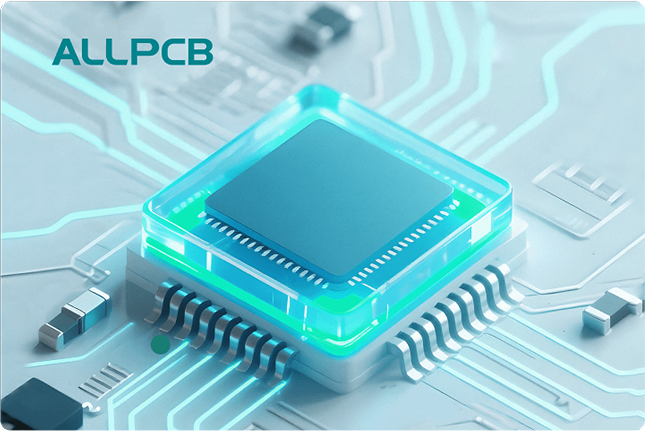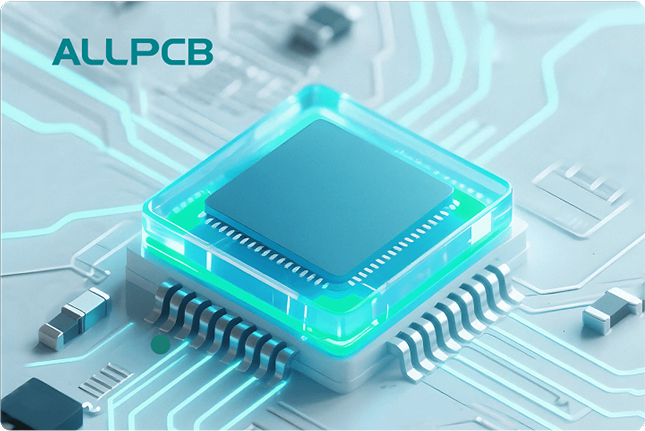In the fast-paced world of electronics manufacturing, efficiency is everything. If you're looking to improve your Surface Mount Technology (SMT) line, advanced Automated Optical Inspection (AOI) equipment can be a game-changer. By focusing on AOI equipment SMT efficiency, AOI equipment throughput, AOI equipment optimization, AOI equipment speed, and AOI equipment automation, you can significantly enhance productivity, reduce defects, and cut costs. In this blog, we'll dive deep into how AOI systems transform SMT lines and provide actionable tips to maximize their benefits.
What Is AOI Equipment and Why Does It Matter for SMT Lines?
AOI equipment uses high-resolution cameras and sophisticated software to inspect printed circuit boards (PCBs) during the SMT process. It detects defects like misplaced components, soldering issues, and incorrect part orientations with incredible precision. Unlike manual inspection, which is slow and prone to human error, AOI systems deliver consistent results at high speeds, making them essential for modern manufacturing.
For SMT lines, where components are tiny and densely packed, even a small error can lead to costly rework or product failures. AOI equipment ensures quality control by catching defects early, reducing waste, and maintaining high production standards. With the right setup, AOI can boost your line's efficiency by up to 30%, according to industry studies, allowing you to meet tight deadlines without sacrificing quality.
Suggested Image Placement: Place an image here showing an AOI machine in action on an SMT line. ALT Text: "AOI equipment inspecting PCBs on SMT production line for enhanced efficiency."
How AOI Equipment Improves SMT Efficiency
When it comes to AOI equipment SMT efficiency, the benefits are clear. These systems streamline the inspection process, allowing manufacturers to maintain high output without compromising on quality. Here's how AOI contributes to better efficiency:
- Faster Defect Detection: AOI systems can inspect hundreds of boards per hour, identifying issues in seconds that would take a human inspector minutes or even hours to spot. This speed reduces bottlenecks in production.
- Reduced Rework Costs: By catching defects early—often right after component placement or soldering—AOI prevents faulty boards from moving further down the line, saving time and resources on rework.
- Consistent Quality: Unlike manual inspections, which vary based on the inspector's experience or fatigue, AOI provides reliable results every time, ensuring consistent output and fewer customer returns.
For example, a mid-sized SMT line processing 10,000 boards monthly could reduce defect rates from 5% to under 1% by integrating advanced AOI systems, translating to significant savings in time and materials.
Maximizing AOI Equipment Throughput for High-Volume Production
AOI equipment throughput is a critical factor for manufacturers dealing with high-volume production. Throughput refers to the number of boards an AOI system can inspect in a given time frame. Modern AOI machines are designed to handle thousands of inspections per hour, keeping pace with the fastest SMT lines.
To maximize throughput, consider the following strategies:
- Choose High-Speed Systems: Look for AOI equipment with advanced imaging technology, such as 3D inspection capabilities, which can process complex boards faster than traditional 2D systems. Some systems achieve inspection speeds of up to 150 cm2 per second.
- Optimize Line Integration: Place AOI machines at key points in the SMT process, such as after component placement and post-reflow soldering, to ensure smooth workflow without unnecessary delays.
- Minimize Downtime: Regular maintenance and software updates can prevent unexpected breakdowns, ensuring your AOI equipment operates at peak capacity.
By focusing on throughput, a production line can increase daily output by 20-25%, especially when handling intricate designs with high component density.
Strategies for AOI Equipment Optimization
AOI equipment optimization goes beyond just installing a machine on your line. It involves fine-tuning the system to match your specific production needs. Optimized AOI equipment reduces false positives (incorrectly flagged defects) and ensures accurate inspections, saving time and resources.
Here are some practical ways to optimize your AOI system:
- Customize Inspection Recipes: Tailor the AOI software settings to focus on the most common defects in your production process. For instance, if solder bridging is a recurring issue, adjust the system to prioritize detecting this flaw.
- Leverage AI and Machine Learning: Many modern AOI systems use artificial intelligence to learn from past inspections, improving accuracy over time and reducing false calls by up to 40%.
- Train Your Team: Ensure operators are well-versed in programming and troubleshooting AOI equipment. A trained team can quickly address minor issues, preventing prolonged downtime.
Optimization can lead to measurable gains. For instance, reducing false positives from 10% to 2% can save hours of manual verification per day on a busy SMT line.
The Role of AOI Equipment Speed in Competitive Manufacturing
In today's electronics industry, speed is a competitive edge. AOI equipment speed directly impacts how quickly you can move from production to delivery. Faster inspections mean shorter cycle times, allowing you to fulfill orders more rapidly and take on more projects.
Advanced AOI systems are built for speed without sacrificing accuracy. Some high-end models can inspect a board in under 10 seconds, even for complex assemblies with thousands of components. This is a stark contrast to manual inspections, which might take several minutes per board.
To leverage AOI speed effectively:
- Invest in 3D AOI: These systems capture detailed images from multiple angles in a single pass, cutting inspection times compared to older 2D models.
- Streamline Data Processing: Ensure the AOI software is paired with powerful hardware to avoid delays in image analysis and defect reporting.
- Integrate with Other Systems: Connect AOI equipment with your SMT line's management software to automate data sharing and decision-making, further speeding up the process.
By prioritizing speed, manufacturers can reduce overall production time by 15-20%, making it easier to meet tight deadlines and customer demands.
How AOI Equipment Automation Transforms SMT Lines
AOI equipment automation is the future of SMT manufacturing. Automation eliminates the need for manual intervention in the inspection process, reducing labor costs and human error while increasing consistency. With fully automated AOI systems, boards are inspected, analyzed, and flagged for defects without any operator input.
Key benefits of AOI automation include:
- 24/7 Operation: Automated AOI systems can run continuously, supporting round-the-clock production without the need for breaks or shift changes.
- Integration with Smart Factories: AOI equipment can connect to other automated systems in a smart factory setup, sharing real-time data to optimize the entire production process.
- Scalability: Automated systems are easier to scale as production volume grows, ensuring you can handle larger orders without adding significant labor costs.
For instance, a fully automated AOI setup can reduce inspection-related labor costs by up to 50%, while maintaining defect detection rates above 95%. This level of automation is especially valuable for manufacturers aiming to stay competitive in high-demand markets.
Practical Tips for Implementing AOI Equipment in Your SMT Line
Integrating AOI equipment into your SMT line requires careful planning to ensure maximum efficiency. Here are some actionable steps to get started:
- Assess Your Needs: Determine the specific challenges in your SMT process, such as high defect rates or slow inspection times, and choose an AOI system that addresses those issues.
- Start with a Pilot: Test AOI equipment on a single line or product batch to evaluate its impact on efficiency and throughput before rolling it out across your facility.
- Monitor Performance Metrics: Track key indicators like defect detection rates, false positive rates, and inspection times to measure the AOI system's effectiveness and identify areas for improvement.
- Partner with Experts: Work with a trusted provider to select the right AOI equipment and ensure proper installation and training for your team.
By following these steps, you can seamlessly integrate AOI systems into your workflow and start seeing results in as little as a few weeks.
Real-World Impact of AOI Equipment on SMT Efficiency
The impact of AOI equipment on SMT lines is not just theoretical—it's proven in real-world applications. For example, a manufacturer producing consumer electronics reported a 35% increase in production efficiency after adopting advanced 3D AOI systems. By automating inspections and optimizing defect detection, they reduced rework costs by over 40% and improved customer satisfaction with higher-quality products.
Another case involved a small-scale SMT operation that struggled with manual inspections. After implementing an entry-level AOI system, they cut inspection times from 5 minutes per board to just 15 seconds, allowing them to take on larger orders and grow their business.
These examples highlight how AOI equipment can deliver measurable improvements in efficiency, throughput, and overall profitability, regardless of the size of your operation.
Future Trends in AOI Equipment for SMT Lines
The field of AOI technology is evolving rapidly, and staying ahead of the curve can give your SMT line a competitive edge. Some emerging trends to watch include:
- AI-Driven Inspections: Future AOI systems will rely even more on artificial intelligence to predict and prevent defects before they occur, further reducing waste.
- Enhanced 3D Imaging: Next-generation 3D AOI equipment will offer even higher resolution and faster processing, making it ideal for ultra-complex PCB designs.
- IoT Integration: AOI systems will increasingly connect to the Internet of Things (IoT), enabling real-time monitoring and remote adjustments for maximum efficiency.
By keeping an eye on these advancements, manufacturers can future-proof their SMT lines and maintain high levels of productivity as technology continues to advance.
Conclusion: Elevate Your SMT Line with AOI Equipment
Advanced AOI equipment is a powerful tool for boosting SMT line efficiency. By focusing on AOI equipment SMT efficiency, AOI equipment throughput, AOI equipment optimization, AOI equipment speed, and AOI equipment automation, you can transform your production process, reduce costs, and deliver top-quality products to your customers. Whether you're running a small operation or a large-scale facility, integrating AOI systems offers a clear path to improved performance and profitability.
Take the first step today by evaluating your current SMT line and exploring how AOI technology can address your specific challenges. With the right equipment and strategies, you'll be well on your way to achieving unparalleled efficiency and staying ahead in the competitive world of electronics manufacturing.
 ALLPCB
ALLPCB







